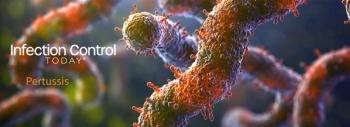
AOHP Releases 2015-2017 Public Policy Statement
The Association of Occupational Health Professionals in Healthcare (AOHP) has released its 2015-2017 Public Policy Statement, which specifically targets health and safety concerns in healthcare. These key areas of focus for AOHP for the next two years were identified by the 2015 AOHP membership survey and needs assessment, and through the partnerships that AOHP has developed with other stakeholders. Highlights of the AOHP 2015-2017 Public Policy Statement include:
Overall Healthcare Worker Safety and Health
Healthcare workers experience some of the highest rates of non-fatal occupational injuries and illnesses. Therefore, AOHP supports efforts to reduce and eliminate occupational hazards in the healthcare setting. AOHP will work to improve awareness of potential synergies between patient and worker health and safety activities, using as its foundation a landmark 2012 document published by the Joint Commission, Improving Patient and Worker Safety: Opportunities for Synergy, Collaboration and Innovation.
Occupational Health Professional Development
Professional development is vital to AOHP in demonstrating expertise and promoting recognition of the valuable role occupational health plays in high quality care delivery. AOHP promotes the advancement of employee/ occupational health professionals and cultivates professional expertise by offering: a national conference with varied learning levels (beginner, intermediate and advanced); local chapter educational programs; mentoring; and professional development through the Congress of Presidents and initiatives of the national Executive Board.
Building Partnerships
AOHP remains committed to working collaboratively with invested stakeholders to achieve the goal of a safe and healthy work environment. Partners include the Joint Commission's Nursing Advisory Council, Centers for Disease Control and Prevention, National Institute for Occupational Safety and Health, National Occupational Research Agenda’s Healthcare and Social Assistance Sector, American College of Occupational and Environmental Medicine, and other accrediting agencies and nursing associations. Potential new partnerships are in various stages of relationship-building.
Bloodborne Pathogen Exposure
Based on the magnitude of sharps injuries in the healthcare setting, AOHP advocates for efforts to reduce these types of injuries through a comprehensive approach that includes: the development of sharps engineering controls and safer medical devices; injury prevention teams to evaluate sharps injuries; administrative controls; and healthcare worker education. In addition, AOHP supports strategies and processes that encourage the prompt reporting and follow-up of significant exposures. In 2012, AOHP developed EXPO-S.T.O.P., an annual sharps injury survey instrument used to ascertain blood exposure incidence and denominator data. Ongoing analysis of this data is being used as the foundation to build a current national database of sharps injuries.
Influenza
In 2011, AOHP first published its position statement on influenza vaccination for healthcare workers. AOHP will continue to support efforts to provide influenza vaccine, free of charge, to healthcare workers on an annual basis and support continuing research efforts to develop evidenced-based best practices related to influenza transmission in the healthcare environment and vaccination of healthcare workers. In addition, AOHP will seek opportunities to evaluate the tracking of worker influenza vaccination rates as they become available through the National Healthcare Safety Network.
Safe Patient Handling
AOHP supports efforts to ensure a safer healthcare environment for both patients and employees, including utilizing lift/assist devices as the primary method for the prevention of musculoskeletal injuries. AOHP advocates for regulations, legislation, education, training, research and prevention activities regarding safer patient handling activities and methodologies and will work to influence both state and national legislation as it relates to safe patient handling. This includes participation in the multidisciplinary task force that developed national guidelines for safe patient handling and mobility.
Respiratory Protection
AOHP advocates for increased research, training and education related to respiratory protection from tuberculosis and other airborne respiratory transmissible diseases, and recently developed a new position statement titled Respiratory Protection for Healthcare Workers. AOHP strongly supports national efforts to scientifically determine the need for annual fit testing, as well as the need for training and education regarding respiratory protection. AOHP is collaborating with The Institute of Medicine’s Respiratory Advisory Group and the Joint Commission's Technical Expert Panel in the development of respiratory protection competencies and effective implementation strategies for all health professionals.
Workplace Violence
Healthcare workers have a high risk for workplace violence because of the populations they serve, including those who may have altered mental status due to the influence of drugs and alcohol, psychiatric disorders, pain, multiple psychosocial stressors or grief. AOHP supports and encourages healthcare organizations to endeavor to protect patients, employees and visitors from acts of workplace violence by implementing comprehensive violence prevention programs that are risk specific to the healthcare organization or facility, as well as continuing research on prevention strategies for workplace violence.
Source: AOHP
Newsletter
Stay prepared and protected with Infection Control Today's newsletter, delivering essential updates, best practices, and expert insights for infection preventionists.






